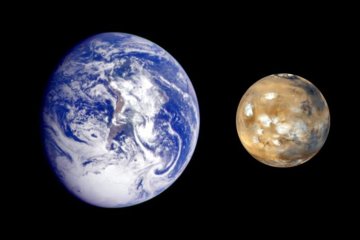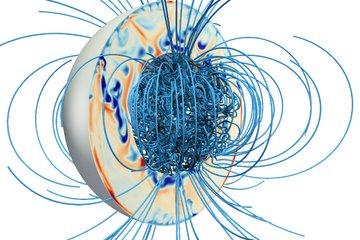All genres
181.
Talk
Nonlinear force-free coronal magnetic stereoscopy. DPG Frühjahrstagung 2017, Bremen, Germany (2017)
182.
Talk
Coronal magnetic field modeling using stereoscopic constraints. 15th European Solar Physics Meeting, Budapest, Hungary (2017)
183.
Talk
Coronal magnetic field extrapolation. European Geosciences Union General Assembly 2017, Vienna, Austria (2017)
184.
Talk
3D-Coronal magnetic fields. Theoretical and observational approaches to the solar magnetic field: Achievements and remaining problems - conference in honor of Prof. Takashi Sakurai's career -, Tokyo, Japan (2016)
185.
Talk
Solar Aspects of Space Weather. Joint Space Weather Summer Camp 2016, Neustrelitz, Germany (2016)
186.
Talk
The Magnetic Field of the Sun. AG 2016, Splinter meeting: The Role and Interaction of Stellar Magnetic Fields: From the Stellar Surface to the Interstellar Medium, Bochum, Germany (2016)
187.
Talk
Coronal magnetic field extrapolation. Solar Magnetic Fields: from Measurements towards Understanding, Bern, Switzerland (2015)
188.
Talk
Coronal modelling for Solar Orbiter. 16th Solar Orbiter SWT Meeting Numerical modeling support for Solar Orbiter (special MADAWG session), Göttingen, Germany (2015)
189.
Talk
Advanced modelling of the coronal magnetic field. IUGG, Prague, Czech Republic (2015)
190.
Talk
Solar magnetic activity and space weather. Workshop and Research visit on: The synergy of magnetic reconnection and waves in evolution of the solar corona, Weihai, China (2015)
191.
Talk
Solar coronal magnetic fields: Source region for space weather activity. 4. Nationaler Weltraumwetterworkshop, Neustrelitz, Germany (2015)
192.
Talk
Coronal active region modelling based on SDO data. DPG Frühjahrstagung 2014, Berlin (2014)
193.
Talk
NLFFF-2014: Field-of-view experiments in Cartesian and spherical geometry. NLFFF Team meeting, Bern, Switzerland (2014)
194.
Talk
Selfconsistent magnetostatic modelling of the solar atmosphere from Sunrise/IMAX measurements. AG Annual Meeting 2014, Bamberg, Germany (2014)











